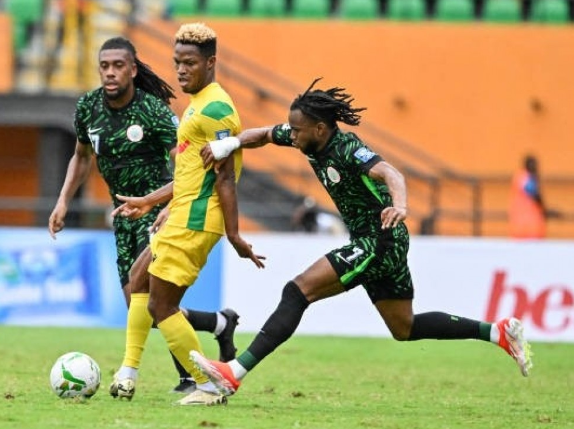
Life is like traveling, traveling is like life
In 2006, when Hidetoshi Nakata, who had just turned 30 years old, suddenly retired from soccer, he made a declaration of his retirement.
Hidetoshi Nakata's life, as he said himself, is a journey, I should say, over and over again, we do not know where the end of his journey is, the scenery he experienced on this journey is the process of his quenching himself, and finally become what we see now, Hidetoshi Nakata!
Asia's most influential soccer player
The year 1993 was a very influential year for Japanese soccer. In this year, the first generation of Japanese national team was established with mainly J-League players.
The J-League was founded in the same year as the World Cup, when the dream of professionalization of Japanese soccer had just taken its first step, and they were about to challenge the Asian zone of the World Cup, which they had never succeeded in breaking through, and this dream had already become the sad wish of the Japanese people.
In that Japanese team, there was the best striker in Japan in recent times, Chira Miura. The Japanese team had the best striker in Japan in recent times, Chira Miura, as well as famous players such as Ramos, Hiroshi Kitazawa, Masashi Nakayama, and Masanori Ihara. The Japanese team fought to the last minute in the Asian Regional Championships, and in the end, what awaited them was the tragedy known to the world as Duha!
Duha's tragedy was extremely hurtful to the Japanese nation, and fans, both on the field and in front of the TV, were devastated at the moment. The day of October 28, 1993, was the darkest moment in the history of Japanese soccer.
In this year, Hidetoshi Nakata, just a 16-year-old high school student, at this point in time, the Japanese nation, did not know that this teenager, who had already been selected as a representative of the Japanese U15, had already made it to the U17 team and played at this point in time.
In 1994, Hidetoshi Nakata was a senior at Nirasaki High School in his hometown of Yamanashi Prefecture, and had already become the team's midfield commander tower. In November 1994, Nakata participated in the last national tournament of his high school career, and reached the final in the prefectural preliminaries against God Keizo High School, and although Nakata produced goals, the team was unable to defend the score, and ultimately lost in the PK battle, and at this time, Nakata was only a high school in Yamanashi Prefecture. Nakata was only a senior at a high school in Yamanashi Prefecture at the time, and was not yet well known. However, the J-League had just been established, and all the teams were actively looking for talent, and Nakata had been targeted by a number of J-League clubs as early as his sophomore year of high school, and according to Nakata's teacher in the club at the time, there were already eleven J-League teams that had issued invitations to Nakata at that time (at that time, there were only twelve J-League teams, and there are business cards of eleven of them in the movie). Nakata finally decided to join the Hiratsuka Bima (also known as Bellemare).
From the current information, it seems that Hiratsuka Hima, now known as Shonan Himalayas, is a team that has just been promoted from the JFL, but in fact, this is not the case. During the founding of the J-League, many of the systems were not yet complete, and Hiratsuka Hima joined the J-League at the end of their first season after they had fulfilled the J-League's requirements for the team's software and hardware, and they were in fact a very rich team at that time. Hidetoshi Nakata was just a member of their team building program, and you can see who Nakata's teammates were over the years. Japan's representative at the 98 World Cup, right back Ko Nara Hashi, winger Bisu Lu, and substitute goalkeeper Nobuyuki Kojima, were also members of the national team, and they were the first to join the J-League.
The total number of 4 places, even the strongest defender in the history of South Korea Hong Myung-bo played in 97 and 98 Hiratsuka Bima and Nakata in the same team, it should be known that Hong Myung-bo and Nakata Hidetoshi is also in the FIFA 100 list, and Asia only these two people only!
Hidetoshi Nakata joined the J-League at the age of 18 in the 1995 season, and soon became the team's mainstay. The Hiratsuka Bima team's record in the J-League was only mediocre, with only a 2nd place finish in the second half of the 94 season and a 4th place finish in the first half of the 97 season, but this could not overshadow Nakata's performance on the field, and the Hiratsuka Bima team won the Asian Cup Championship Cup (one of the predecessors of the current Asian Championship Cup) in 1995, which was the highest honor that Nakata had ever won in Hiratsuka Bima. Nakata won the 1995 Asian Cup (one of the predecessors of the current Asian Champions Cup), which was the highest honor Nakata had ever won for Hiratsuka Bima, and he quickly rose up the ranks of the Japanese soccer world and became a shining star.
As many commentators have said, Hidetoshi Nakata's style of play was very avant-garde in the 90's. At that time, the concept was still that attacking midfielders had to control the ball and wait for the team to advance or to lead the formation with the ball themselves, but Nakata's approach was completely different, he was very good at receiving passes at high speeds and pushing the ball forward, usually only pushing the ball once or twice, and stretching out his foot at super high speeds to flick the ball before the opposing team had already come into contact with him. Nakata's explosive power and physical strength, as well as his incredible bouncing power, often allows him to pass the ball almost upside down, but Nakata can maintain the accuracy of his passes, and the ball will penetrate the opponent's defense at high speeds.
This kind of passing pattern is mainly used in high-speed side road advancement, in fact, it is the modern way of using wingbacks in the center of the mid-field to quickly distribute to the side road, the wingers and wingbacks can directly enter the opponent's two deep flanks, at that time, when there was still the concept of controlling the ball at the feet, Nakata's way was to let the ball leave the feet as soon as possible, always touch the ball before the opponent and eject the ball out because the ball leaves the feet too fast for the guards to have the chance to The defender can't press forward to make an offside trap or reverse back to chase, at this time, the side player who has accelerated to the limit can easily cross the defense, and the opponent even still has a turn of the time difference, which is still the standard way of playing nowadays, only in the 90's, the speed of play is relatively slow, not to mention that Japan wants to play the main possession of the ball (nowadays, Japan still tends to control the possession of the ball, and it's the European teams who will play the Nakata's attacking speed was too fast for the Japanese at the time, so Nakata always felt out of place in the Japanese team, indeed because he was special.






























